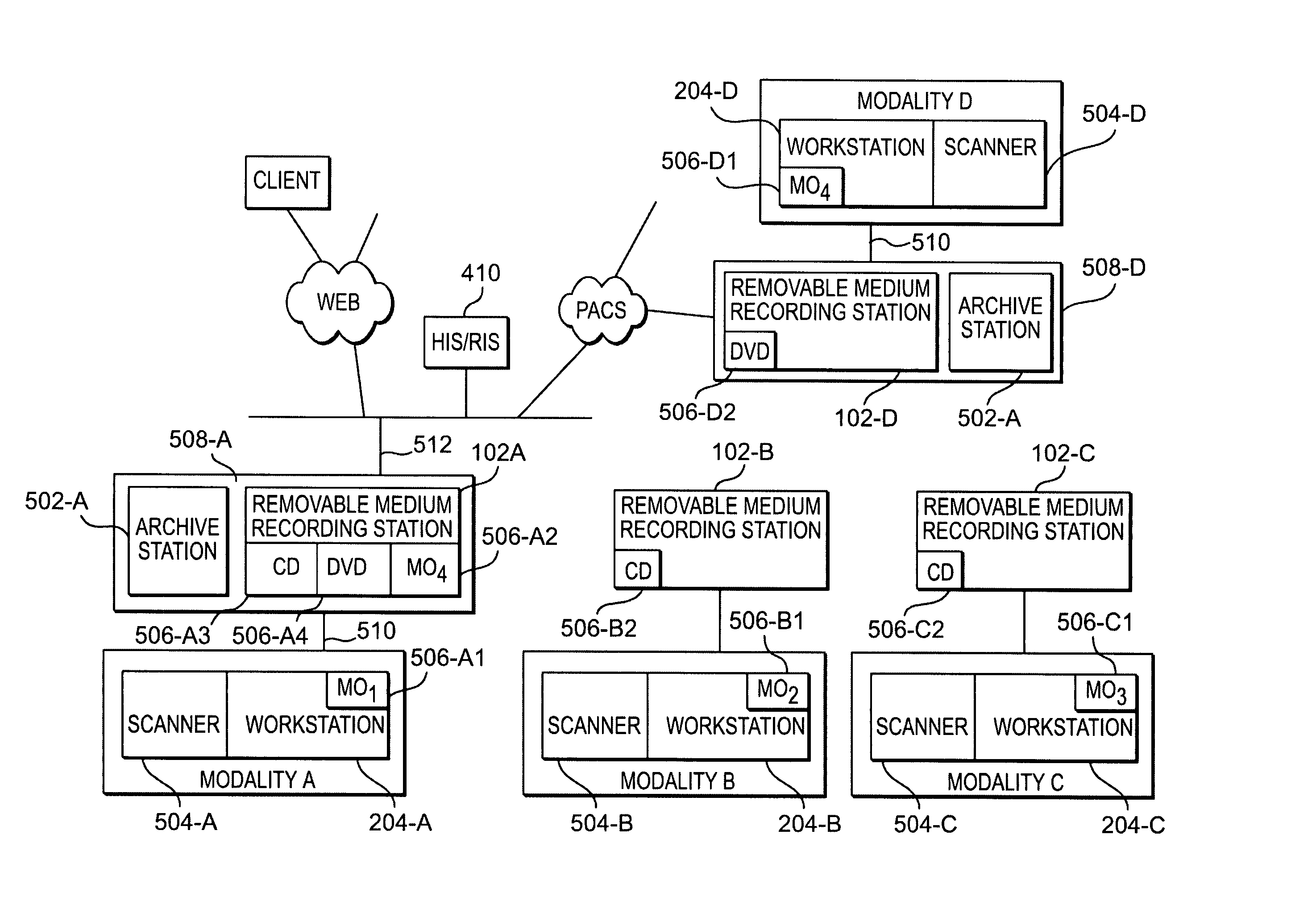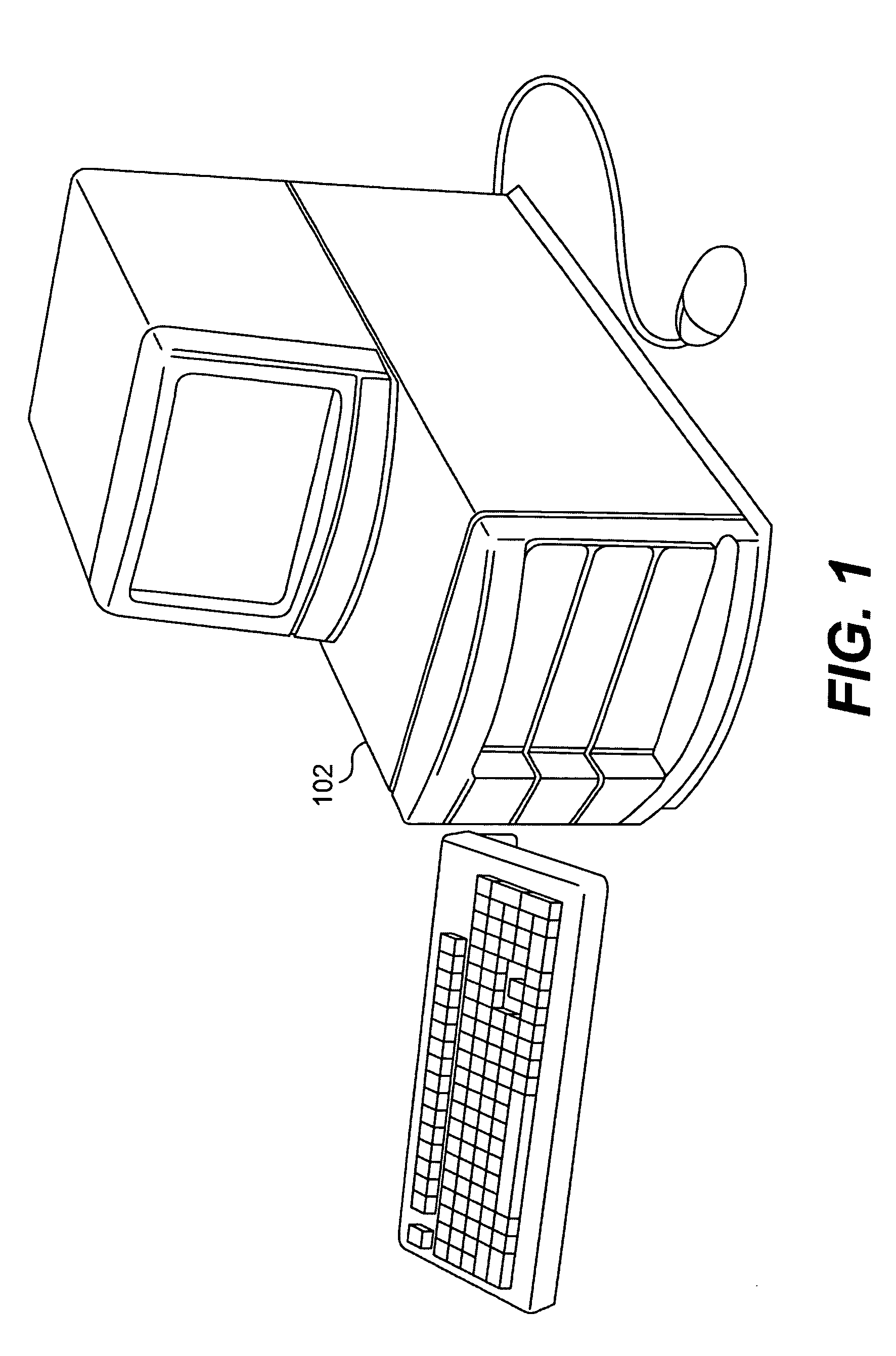[0008] Accordingly, the present invention is directed to a removable medium recording
station that enhances access, distribution, and archiving of medical images. In one embodiment, the removable medium recording
station records medical image data in a
digital imaging and communications in
medicine (
DICOM) format onto a removable medium (e.g., CD or
blue laser media). The inventive removable medium recording
station can be used in conjunction with existing
medical imaging systems and networks to provide a cost effective means to deliver medical images to a large
installed base of, for example,
CD ROM readers around the world. In another embodiment, the removable medium recording station and automated archive
robotics (e.g., an archive jukebox) may be combined to provide a low-cost scaleable
turnkey system for archiving medical image data. In this latter embodiment, the archive system permits the selective storing of medical data (including image data) received from a medical modality (e.g., CT, MRI, etc.) onto a removable medium (e.g., DVD), which may subsequently be placed via the automated
robotics in a
magazine within the system housing.
[0010] The removable medium recording station can be used to effectively replace an installed storage device on the stand-alone
workstation. For example, the removable medium recording station can be used to effectively replace a MO drive installed within the stand-alone
workstation with a writable CD drive contained within the removable medium recording station. This effective replacement of the installed storage device on the stand-alone
workstation eliminates the large undertaking of changing
software drivers in the stand-alone workstation and obtaining regulatory approval for validation of the change.
Elimination of these elements reduces the costs and minimizes the effect on the medical modality system operation.
[0012] Thus, the outboard storage operation enables an operator to store medical image data in a particular format and / or removable storage medium that promotes the
accessibility and distribution of the medical images. Additionally, since the recording station can playback medical images through the stand-alone workstation, this eliminates the need for the removable medium of the first type. In a preferred embodiment, the removable medium recording station stores medical image data in a
DICOM format onto a CD.
[0016] Accordingly, it is a feature of the present invention that the
peripheral-type removable medium recording station enables a hospital or other medical
service provider to use new storage formats (e.g.,
DICOM) and mediums (e.g., CD, DAT, DVD, etc.) without modifying existing
medical systems and networks. Further, the ability to support new storage formats and mediums through the addition of a
peripheral-type device allows a hospital or medical system manufacturer to invest in or use current formats and mediums (proprietary or standardized) without losing the opportunity to take
advantage of new storage formats and mediums that are universally accepted in the future. Until the medical system technology fully evolves in its use of standardized storage formats and mediums, a hospital or manufacturer may be unwilling to make the full investment into new technology. The removable medium recording station permits a hospital or manufacturer to use new technologies with a modest investment without sacrificing current and / or past investments.
[0017] It is a further feature of the present invention that the removable medium recording station includes a pair of removable medium drives. This pair of removable medium drives enables an operator to efficiently copy the contents (i.e., medical image data) of a first removable medium to a second removable medium. For example, a pair of removable medium drives could be used to copy a patient study contained on a first removable medium onto a second removable medium. It is significant that the generation of a second removable medium does not involve interaction with an archive controller or with a stand-alone workstation having the patient study recorded therein. No searching and retrieval of medical image data from a medical system or network is required. Accordingly, the multiple drives facilitate the
copying of information without disruption to the
processing of the medical modality and efficient distribution of medical images is thereby achieved.
[0018] These multiple
removable media drives also serve to enhance the archive capability of the present invention. An archive system of the present invention associated with one medical modality may receive information for archiving from other medical modalities when the
removable media drives incorporated in the archive system are compatible with removable media drives incorporated by the medical modalities. Here again, the use of the present invention permits a hospital or manufacturer to take
advantage of new technologies through a modest investment and without sacrificing current and / or past investments.
 Login to View More
Login to View More  Login to View More
Login to View More 


